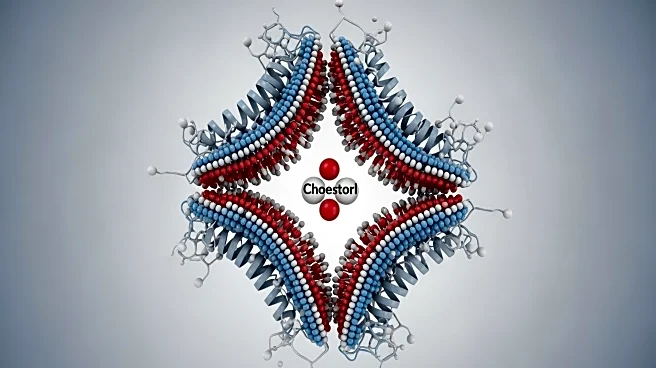What's Happening?
A research team has successfully identified the structural diagnosis of mixed cardiac amyloidosis through the study of Apolipoprotein A-IV fibrils. The study involved a patient who had been diagnosed with left ventricular hypertrophy at the age of 44
and later showed signs of amyloidosis. The diagnosis was confirmed through a cardiac biopsy before a heart transplant. The research utilized advanced techniques such as cryo-electron microscopy and mass spectrometry to isolate and characterize amyloid fibrils from the patient's heart tissue. The findings provide insights into the biochemical and structural properties of amyloid fibrils, which are crucial for understanding the progression and treatment of cardiac amyloidosis.
Why It's Important?
The identification of the structural properties of amyloid fibrils is significant for the medical community as it enhances the understanding of cardiac amyloidosis, a condition that can lead to severe heart complications. This research could pave the way for developing targeted treatments for amyloidosis, which were not available at the time of the patient's heart transplant. By understanding the molecular structure of amyloid fibrils, researchers can better design drugs that specifically target these proteins, potentially improving patient outcomes and reducing the burden of heart disease associated with amyloidosis.
What's Next?
The research team plans to continue their investigation into the structural properties of amyloid fibrils, with the aim of developing new therapeutic strategies. Further studies may focus on the application of these findings in clinical settings, potentially leading to the development of novel treatments for patients suffering from cardiac amyloidosis. Collaboration with pharmaceutical companies could accelerate the translation of these research findings into practical medical solutions.
Beyond the Headlines
The study highlights the importance of interdisciplinary approaches in medical research, combining techniques from biochemistry, molecular biology, and advanced imaging technologies. This research not only contributes to the understanding of cardiac amyloidosis but also demonstrates the potential of cryo-electron microscopy and mass spectrometry in diagnosing complex medical conditions. The ethical considerations and patient consent involved in the study underscore the importance of responsible research practices.













